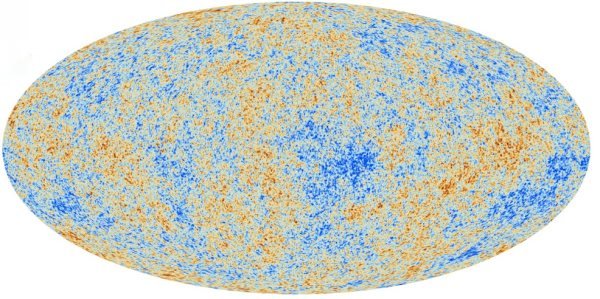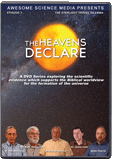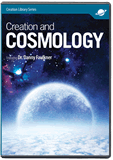
Planck Map Confirms Big Bang Model Just Doesn’t Fit
Planck map increases age estimate of the universe but confirms a plank of the big bang model just doesn’t fit.
News Source
The European Space Agency just released an upgraded map of the universe’s distant cosmic microwave background radiation (CMB). Believing that looking so far away is the same as looking back in time, many conventional cosmologists consider this the same as looking back to a time just after the big bang. (See Distant Starlight—The Anisotropic Synchrony Convention for more information about problems with this notion.) The latest findings change a few things and contain some surprises.
The existence of cosmic background radiation was originally predicted as a consequence of the big bang model. Therefore, when CMB was actually discovered in 1965, the big bang model became the model of origins accepted by most cosmologists.
Just what is CMB? Answers in Genesis astronomer Dr. Danny Faulkner explains:
The cosmic microwave background (CMB) supposedly arises from an era that took place about 400,000 years after the big bang, when matter had cooled to a temperature of approximately 3,000 K, which allowed electrons and protons to combine to form stable hydrogen atoms for the first time. Prior to this hypothetical “age of recombination,” photons of light could not travel far before they were absorbed by the electrons. This made the universe opaque. After this time, the universe would have been transparent, allowing photons to decouple from matter and pass mostly unhindered through space. Today, we see the radiation from the “age of recombination” coming from all directions after it had traveled billions of light-years, but since the universe has expanded about a thousandfold since, this distant radiation has cooled by a factor of a thousand to about 2.73 K.

This graphic representation of the Planck satellite’s data shows more variations than predicted from the big bang model. Analysis of the data has refined the Hubble constant, a measure of the rate of expansion of the universe. Calculations based on this measurement and the big bang model have produced a slightly older age for the universe than the previous commonly accepted age. Image courtesy of ESA/Planck Collaboration through BBC.
The big bang model has been modified to attempt to make it fit observation, and one necessary modification has be the idea of inflation. Dr. Faulkner states the following:
Inflation posits that very shortly after the big bang, the universe underwent a very rapid expansion to a much larger size. Descriptions of the process vary, but typically, inflation supposedly happened about 10–35 seconds after the big bang, during which the now-visible universe expanded from perhaps the size of a proton to the size of an orange. Note that inflation is far faster than the speed of light, and that the normal rate of universal expansion that we see today prevailed after inflation.
But inflation, if it occurred, should have produced homogenous uniformity in the CMB. The CMB should be evenly distributed throughout the universe. Yet in 2003, NASA’s Wilkinson Microwave Anisotropy Probe (WMAP) showed that CMB is not so homogeneous after all. The latest reported analysis of data from the Planck Satellite refines the information from the WMAP, confirming that the CMB is not nearly so homogeneous as the big bang model needs for it to be.
The wrinkle in the data is the non-homogeneity in the CMB. Commenting on the new findings, Dr. Faulkner gives the following explanation:
It’s interesting that some of the results of this data, such as the expansion rate of the universe, are at variance with measurements made by other means. Furthermore, the Planck map verifies a large anisotropy detected by WMAP. This anisotropy would appear to violate the assumption of homogeneity, upon which the big bang model critically depends. Proponents of the big bang minimize this, because their entire model would come clattering down otherwise.
Headlines around the globe are declaring that the latest information from the Planck Satellite confirms the big bang really happened.
Headlines around the globe are declaring that the latest information from the Planck Satellite confirms the big bang really happened. But what it confirms is that there is cosmic microwave background radiation and that there are slight deviations in the temperature. The new map does not offer a reenactment of the big bang. And while the slight variations in temperature are interpreted as cooler areas left where matter condensed to form stars and galaxies, that interpretation is also based on acceptance of the big bang model. Instead, the data confirms that CMB exists and that there are temperature variations in the universe but cannot demonstrate how they came to be.
What the Planck data does provide are more refined measurements of physical constants such as the Hubble constant, a measure of the present rate of expansion of the universe. Because that number is actually a little smaller than previously thought, the calculated age of the universe just got about 80 million years older, now being set at 13.82 billion years. Yet while the Hubble constant is measurable, the age calculation depends on all the unverifiable assumptions of the big bang model.
Explaining the significance of the new findings with regard to the big bang model, Dr. Faulkner states the following:
The discovery of the CMB (Cosmic Microwave Background) in 1965 was taken by most astronomers as proof of the big bang. Its discovery is the reason why the big bang became the dominant cosmological model. To constrain the big bang model, cosmologists require an all-sky map of the CMB, a task that has been done three times now. This recent survey by the Planck is an improvement of the map provided by the WMAP (Wilkinson Microwave Anisotropy Probe) of a decade ago, which itself was an improvement of the map produced by COBE (Cosmic Background Explorer) a decade earlier than that. The results, such as the age of the big bang universe, gleaned from maps such as this are extremely model dependent. That is, if the model is altered, the results are altered.
Ultimately, people generally see a map like this what they want to see. If one believes the big bang, one sees in this great evidence of the big bang. On the other hand, people like me who don’t believe the big bang aren’t very impressed.
So should we expect this discrepancy in the CMB to alter conventional cosmological opinions about the big bang? No. Those big bang interpretations are based on unverifiable, worldview-based assumptions that demand a way to explain origins without God and to ignore the biblical account of origins. As Martin White, one of the Planck scientists, says, “This is one of the most exciting parts of the data, is this apparent tension between these different ways to estimate how rapidly the universe is expanding. The hope would be that this is actually pointing toward some deficiency in the models or some extra physics.”1
As in the past, the big bang model may undergo some refinement to accommodate the new data. But the fact that slight temperature variations and CMB exist does not confirm the big bang happened. And the latest data just adds to the scientific problems the big bang model already has.
Further Reading
- The Big Bang and Evidence for the “Inflation Theory”—A Preliminary Comment
- Have Cosmologists Discovered Evidence of Inflation?
- Does the Big Bang Fit with the Bible?
- Distant Starlight—The Anisotropic Synchrony Convention
- The Big Bang—A Hypothesis
- Light-Travel Time: A Problem for the Big Bang
- Anisotropic Synchrony Convention—A Solution to the Distant Starlight Problem
For More Information: Get Answers
Remember, if you see a news story that might merit some attention, let us know about it! (Note: if the story originates from the Associated Press, FOX News, MSNBC, the New York Times, or another major national media outlet, we will most likely have already heard about it.) And thanks to all of our readers who have submitted great news tips to us. If you didn’t catch all the latest News to Know, why not take a look to see what you’ve missed?
(Please note that links will take you directly to the source. Answers in Genesis is not responsible for content on the websites to which we refer. For more information, please see our Privacy Policy.)
Footnotes
- Clara Moskowitz, “New Map of Big Bang Light Hints at Exotic Physics,” Yahoo! News, March 21, 2013, http://news.yahoo.com/map-big-bang-light-hints-exotic-physics-205428311.html.
Recommended Resources

Answers in Genesis is an apologetics ministry, dedicated to helping Christians defend their faith and proclaim the good news of Jesus Christ.
- Customer Service 800.778.3390
- © 2024 Answers in Genesis





